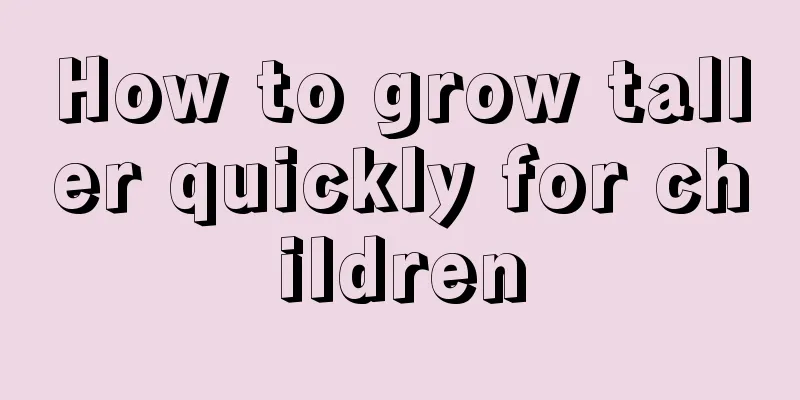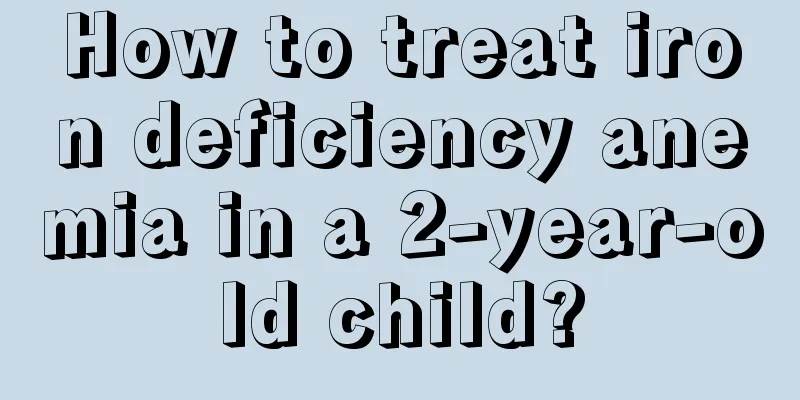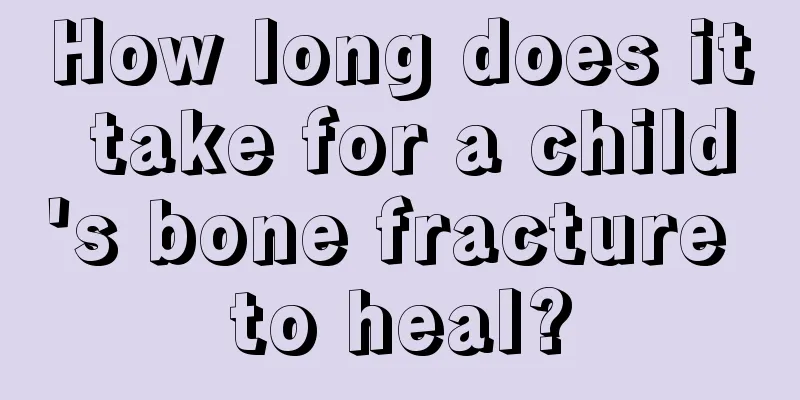The order in which children's teeth erupt and what symptoms occur during teeth eruption

|
When a child is 6 months old, he or she has basically started to grow teeth. Every time the child smiles, the newly grown white teeth are exposed, which is so adorable. There is also a sequence for children's teeth eruption. Parents will find it if they pay attention. There will also be some symptoms before children's teeth erupt. At this time, parents should comfort their children and supplement their nutrition in time. The correct order of teething in children 6-8 months: Two middle incisors grow out of the lower alveolar teeth, followed by two more incisors grow out of the upper alveolar teeth. 8-12 months: The two outer incisors of the upper alveolar teeth grow out, and then the two outer incisors of the lower alveolar teeth emerge from the gums. 12-16 months: The first deciduous molars appear in the upper and lower alveoli. 16-20 months: Canine teeth grow in the upper and lower alveoli. 20-30 months: The two second deciduous molars in the lower alveolar teeth and the two second deciduous molars in the upper alveolar teeth grow out, and all 20 deciduous teeth are grown. Babies start to grow teeth at 6 months old, and by the age of 2 and a half, all 20 deciduous teeth have basically come out. What are the symptoms of teething in children? 1. Drooling: Babies start drooling around ten weeks to three or four months old, and teething particularly stimulates saliva secretion. Rash on the chin or face. Your baby's chin and facial skin may develop allergic rashes due to long-term contact with saliva. To avoid this phenomenon, you should wipe the baby's saliva frequently. When your skin is dry, apply a gentle lotion to moisturize it. 2. Mild cough: Too much saliva can cause your baby to regurgitate or cough. As long as it's not a cold or allergies, it doesn't matter. Chew. A teething baby may bite anything and everyone he sees—from his own hand to his mother's nipple to a stranger's finger—in an attempt to relieve the pressure of the growing tooth under his gums by applying the force of chewing. 3. Pain: Inflammation is the only way the delicate gum fibers cope with the approaching tooth, and for some babies it can be extremely painful, while for others it feels nothing at all. It is especially uncomfortable when the first teeth and molars grow (but molars only grow after about one year old). 4. Irritability: As the tip of the tooth gets closer to the top of the gum, the inflammation becomes more severe and the constant pain makes the baby irritable. |
<<: At what age can children eat cherries?
>>: Why does a child vomit after drinking water?
Recommend
Why are baby's eyes purple?
The baby's physical condition is constantly c...
How to treat chronic pharyngitis in babies
Many babies will experience hoarseness when they ...
How to treat high blood count in children
High blood count is a kind of inflammation that w...
What medicine is good for children with otitis media?
Children are a high-risk group for otitis media, ...
Causes of hoarseness in five-year-old children
For children, the voice should be relatively thin...
Why do children's hands and feet itch?
We adults often have problems, and the same is tr...
What causes chest tightness and shortness of breath in children?
Sometimes chest tightness and shortness of breath...
Benefits of eating watermelon for children
Although watermelon is delicious, it is too cold ...
What should we pay attention to during the early childhood education period?
With the development of the times, many parents w...
What to do if a three-year-old child suddenly has a fever
Children have the weakest resistance and can easi...
What is the cause of deafness in newborns?
Newborn deafness may be congenital or acquired. C...
How to treat hemangioma on baby’s head? Treatment of hemangioma on baby's head
Hemangioma is also common in infants' heads. ...
What are the emergency measures for a heart attack?
Heart disease is a very serious type of disease, ...
Eight-month-old baby can't sit
As the old saying goes: three turns and six sits....
Why does my 4-year-old have pain in his belly button?
A 4-year-old child has a belly button pain proble...









